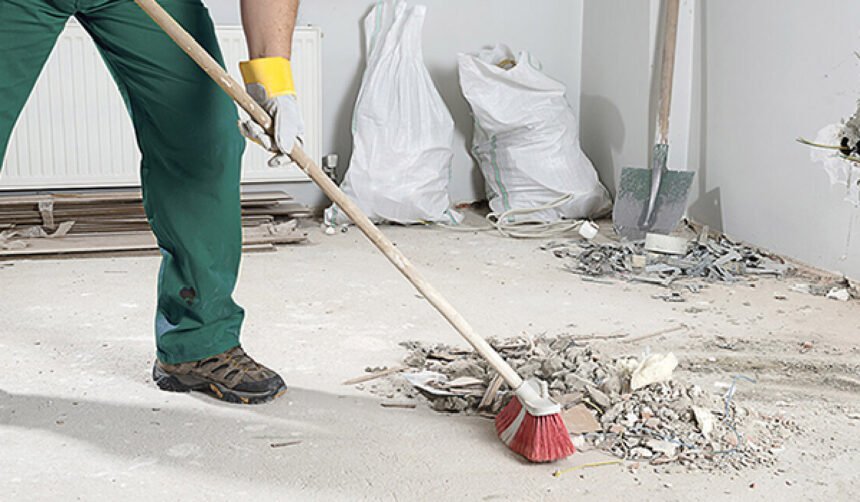Introduction
After the dust settles and the final nail is hammered in, the construction site is far from ready for occupancy. One of the most critical phases that ensure a project’s completion is post construction cleaning. This specialized type of cleaning transforms a construction site from a messy, hazardous area into a pristine, safe environment ready for use.
Whether it’s a residential renovation or a large commercial build, post construction cleaning is essential to remove debris, dust, and leftover materials that accumulate during construction. This process requires specific knowledge, techniques, and equipment that go beyond standard cleaning methods. Understanding the importance and scope of this cleaning can save time, reduce risks, and make a project’s final presentation stand out.
Why Post Construction Cleaning is Crucial
Construction sites often leave behind a significant amount of dust, debris, and residue that can pose safety hazards and health risks. The importance of post construction cleaning extends beyond aesthetics; it’s about safety, compliance, and functionality.
- Safety First: Loose nails, shards of glass, dust, and leftover materials can cause injuries. Thorough cleaning minimizes these risks.
- Health Concerns: Construction dust, particularly from drywall or concrete, can irritate respiratory systems. Proper cleaning helps improve indoor air quality.
- Improved Functionality: Dust and debris can damage HVAC systems, electronics, and appliances. Cleaning ensures these systems work efficiently.
- Professional Appearance: A spotless finish showcases the quality of the construction and makes a positive impression on clients or occupants.
Stages of Post Construction Cleaning
Post construction cleaning is often broken down into stages, each with a different focus and intensity. Knowing these stages can help plan the cleaning timeline effectively.
1. Rough Cleaning
This first phase typically happens immediately after major construction work is completed but before finishing touches like painting or flooring. It involves:
- Removing large debris such as wood scraps, drywall pieces, and packaging materials.
- Sweeping or vacuuming dust and dirt from floors and surfaces.
- Disposing of trash safely and appropriately.
2. Detailed Cleaning
Once all construction materials are removed, detailed cleaning targets finer dust and stains:
- Wiping down all surfaces, including walls, doors, windows, and fixtures.
- Cleaning light fixtures, ceiling fans, and vents.
- Scrubbing bathrooms, kitchens, and other functional spaces.
- Cleaning floors thoroughly, including polishing or vacuuming carpets.
3. Final Cleaning
This stage prepares the space for occupancy or presentation:
- Polishing glass surfaces and mirrors.
- Spot-cleaning any marks or smudges.
- Sanitizing bathrooms and kitchens.
- Ensuring every nook and cranny is spotless.
Key Challenges of Post Construction Cleaning
Post construction cleaning is more challenging than routine cleaning due to the nature of the debris and the condition of the space.
- Heavy Dust Accumulation: Fine dust can settle everywhere—from floors to vents and HVAC systems.
- Stubborn Stains: Paint splatters, adhesive residues, and concrete stains require special solvents or scrubbing techniques.
- Hard-to-Reach Areas: Construction debris often accumulates in corners, behind fixtures, or on ceilings.
- Safety Hazards: Handling broken glass, sharp nails, and chemicals requires protective gear and careful procedures.
Essential Tools and Equipment
Using the right tools makes a significant difference in the quality and efficiency of post construction cleaning.
- Heavy-duty vacuums with HEPA filters: To capture fine dust particles.
- Scrapers and putty knives: For removing paint drips and adhesive residues.
- Microfiber cloths and mops: For dusting and polishing without spreading dirt.
- Power washers or steam cleaners: For deep cleaning hard surfaces.
- Protective gear: Gloves, masks, goggles to protect cleaners.
Environmental Considerations
Sustainability is increasingly important in every industry, including construction and cleaning. Effective post construction cleaning practices now often include:
- Proper disposal and recycling of construction waste.
- Using eco-friendly cleaning products that don’t harm the environment.
- Minimizing water usage by employing efficient cleaning techniques.
- Reducing the release of dust and chemicals into surrounding areas.
Hiring Professionals vs. DIY Post Construction Cleaning
While some smaller projects might allow for DIY cleaning, many contractors and property owners prefer professional post construction cleaning services.
Benefits of Hiring Professionals:
- Expertise in handling tough stains and debris.
- Access to industrial-grade equipment.
- Saves time and reduces stress.
- Ensures compliance with safety and environmental standards.
- Provides guarantees for thoroughness and quality.
Tips for a Successful Post Construction Cleaning
- Plan Ahead: Schedule cleaning after all major construction tasks are done.
- Create a Checklist: A detailed cleaning checklist ensures no area is missed.
- Ventilate the Space: Open windows and use fans to clear dust.
- Use Proper Safety Equipment: Protect yourself from dust and sharp objects.
- Focus on High-Touch Areas: Clean switches, door handles, and fixtures thoroughly.
- Double-Check Flooring: Make sure carpets, tiles, and hardwood floors are spotless.
Conclusion
Post construction cleaning is an indispensable step in the completion of any construction or renovation project. It goes beyond simple tidying up to ensure safety, cleanliness, and a polished final presentation. Whether you choose to do it yourself or hire professionals, understanding the scope and importance of this cleaning process is key to a successful transition from construction site to comfortable living or working space.
By investing time and effort into thorough post construction cleaning, you protect the health of future occupants, uphold safety standards, and highlight the quality of your construction work. A well-executed cleaning process truly marks the finishing touch on any construction project.
For More Information, Visit Dotmagazine








